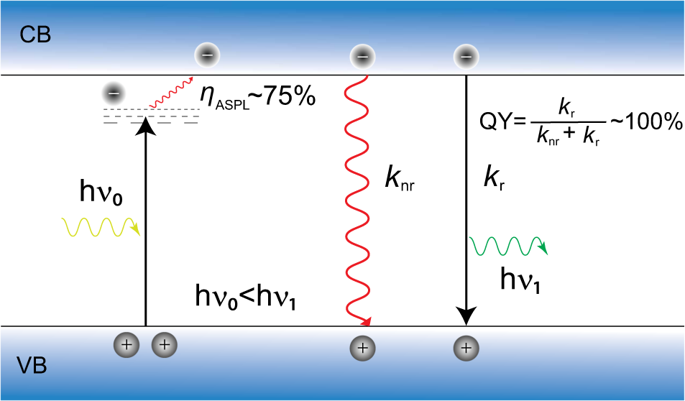NPG Asia Materials ( IF 8.6 ) Pub Date : 2019-10-11 , DOI: 10.1038/s41427-019-0156-4 Shubin Zhang , Maksym Zhukovskyi , Boldizsár Jankó , Masaru Kuno

|
Abstract
Over the past two decades, there have been sizable efforts to realize condensed phase optical cooling. To date, however, there have been no verifiable demonstrations of semiconductor-based laser cooling. Recently, advances in the synthesis of semiconductor nanostructures have led to the availability of high-quality semiconductor nanocrystals, which possess superior optical properties relative to their bulk counterparts. In this review, we describe how these nanostructures can be used to demonstrate condensed phase laser cooling. We begin with a description of charge carrier dynamics in semiconductor nanocrystals and nanostructures under both above gap and below-gap excitation. Two critical parameters for realizing laser cooling are identified: emission quantum yield and upconversion efficiency. We report the literature values of these two parameters for different nanocrystal/nanostructure systems as well as the measurement approaches used to estimate them. We identify CsPbBr3 nanocrystals as a potential system by which to demonstrate verifiable laser cooling given their ease of synthesis, near-unity emission quantum yields and sizable upconversion efficiencies. Feasibility is further demonstrated through numerical simulations of CsPbBr3 nanocrystals embedded in an aerogel matrix. Our survey generally reveals that optimized semiconductor nanocrystals and nanostructures are poised to demonstrate condensed phase laser cooling in the near future.
中文翻译:

激光冷却半导体纳米晶体和纳米结构的研究进展
抽象的
在过去的二十年中,人们为实现冷凝相光学冷却付出了巨大的努力。但是,迄今为止,还没有可验证的基于半导体的激光冷却演示。近来,半导体纳米结构的合成方面的进展已导致可获得高品质的半导体纳米晶体,其相对于其整体同类物具有优异的光学性质。在这篇综述中,我们描述了如何将这些纳米结构用于证明凝结相激光冷却。我们首先描述在间隙上方和间隙下方激发下的半导体纳米晶体和纳米结构中的载流子动力学。确定了实现激光冷却的两个关键参数:发射量子产率和上转换效率。我们报告这两个参数对于不同的纳米晶体/纳米结构系统的文献价值,以及用于估计它们的测量方法。我们鉴定出CsPbBr3纳米晶体作为潜在的系统,通过其易于合成,接近统一的发射量子产率和相当大的上转换效率,可以证明可验证的激光冷却。通过嵌入气凝胶基质中的CsPbBr 3纳米晶体的数值模拟进一步证明了可行性。我们的调查通常表明,优化的半导体纳米晶体和纳米结构有望在不久的将来展示出凝聚相激光冷却。











































 京公网安备 11010802027423号
京公网安备 11010802027423号